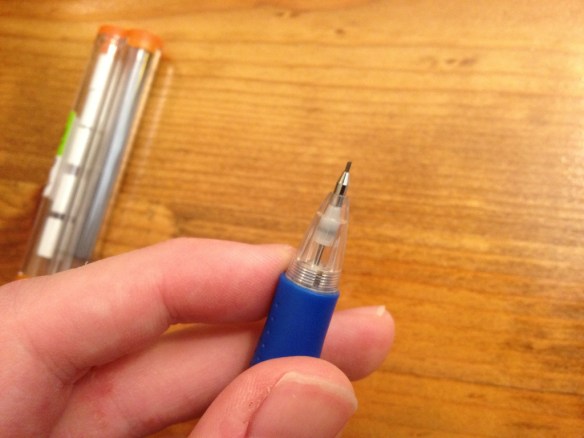Highlighters are a useful tool, mainly for their intended purpose of highlighting text. But they can also be used to “sketch” drawings before inking them and not be picked up by a scanner (similar to drawing with a blue {non-photo} pencil). Still, many highlighters are the same, and I hesitate to review them, but let’s take a quick look at the Liquid Accent highlighter that is my main choice for this type of product.

The design of the body is fairly standard for this type of stuff. The cap is a smooth, domed shape with a “futuristic” clip based in and protruding from it. This snaps onto a barrel that is again one sloping shape, with a “lanyard” hole at the end (I assume that’s what it is). The body is transparent, so the ink supply and feed can be seen from the outside. The section is almost slippery, but not quite, and the chisel tip of the marker is quite hard and works well. The information printed on is the bare minimum, and I wish there was a bit more (like manufacturer’s name) to identify it.

There isn’t much to say about how it writes: it’s smooth, it’s bold, and isn’t too wet (it doesn’t bleed). The ink stays where you put it, generally. I haven’t tested it in the sun, but it does smear a little bit under water, and it also smears any of the less permanent or non-dried inks it highlights.
It’s a good highlighter, but it’s hard to have a bad one. It highlights stuff, it holds well, and it has a ton of ink. (I’m having trouble finding my exact brand online, there are highlighters that seem very similar produced by Sharpie and Paper:Mate {Both owned by Sanford, which is owned by Rubbermaid}, but if it’s a cheap one when it is found, that’s another plus) I don’t really have much to recommend it over any other highlighter, but if you do find it, it’s not a dud.








